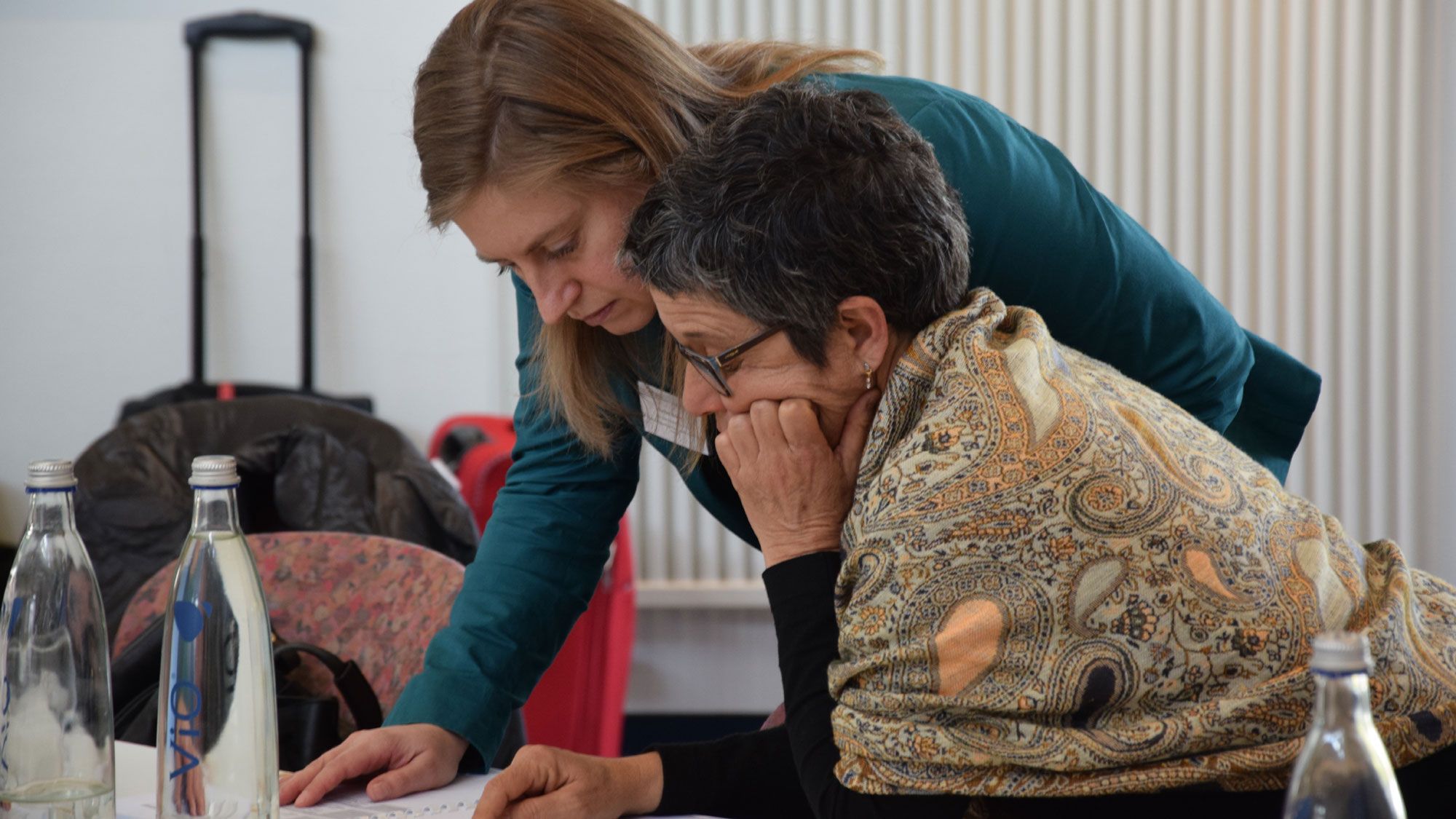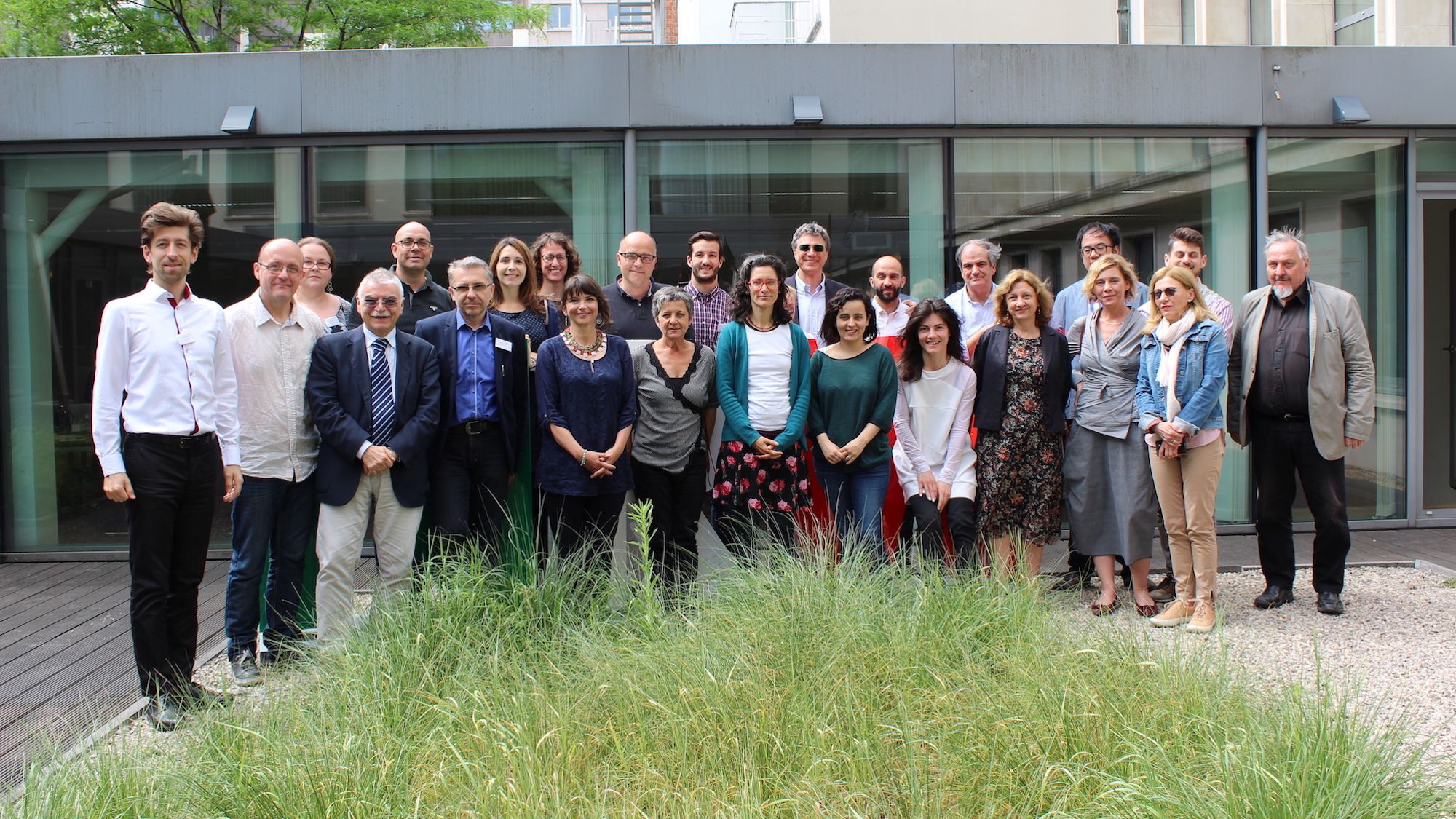Training
Process of teaching and acquiring knowledge and skills for a specific professional, social and personal sphere, which takes place both in and out of education institutions. It can lead to validation and certification. Training is the process of acquiring specific skills to perform a job better (Jucious, 1963). It helps people to become qualified and proficient in doing some jobs (Dahama, 1979).
Flippo (1961) differentiated between education and training, locating these at the two ends of a continuum of personnel development ranging from a general education to specific training. While training is concerned with those activities which are designed to improve human performance on the job that employees are at present doing or are being hired to do, education is concerned with increasing general knowledge and understanding of the total environment. Education is the development of the human mind, and it increases the powers of observation, analysis, integration, understanding, decision making, and adjustment to new situations.
Effective learning needs to be integrated into the work process. Current teaching programs train people to use what is effectively a snapshot of an evolving technology. Trainingis often considered as a variable plugged into an economic model. This short-sighted cycle of training and retraining cannot be broken unless we recognize that learning is a lifelong process that cannot be separated from working [Sachs, 1995].
There are three approaches to training: (1) the traditional approach, (2) the experiential approach, and (3) the performance-based approach (Rama, Etling, & Bowen, 1993). In the traditional approach, the training staff designs the objectives, contents, teaching techniques, assignments, lesson plans, motivation, tests, and evaluation. The focus in this model is intervention by the training staff. In the experiential approach, the trainer incorporates experiences where in the learner becomes active and influences the training process. Unlike the academic approach inherent in the traditional model, experiential training emphasizes real or simulated situations in which the trainees will eventually operate. In this model, the objectives and other elements of training are jointly determined by the trainers and trainees. Trainers primarily serve as facilitators, catalysts, or resource persons. In the performance-based approach to training, goals are measured through attainment of a given level of proficiency instead of passing grades of the trainees. Emphasis is given to acquiring specific observable skills for a task.
By integrating working and learning, people learn within the context of their work on real-world problems. Learning does not take place in a separate phase and in a separate place, but is integrated into the work process. People construct solutions to their own problems, and the system advises them when they are getting into trouble and provides directly relevant information.
Allmendinger (1989) explains how educational system characteristics shape labor market outcomes. Educational systems can be distinguished along the criteria of ‘standardization’ (the provision of equal educational standards nationwide) and ‘stratification’ (the selection procedures within the systems). With a stratified educational system, occupational status is closely determined by individual educational attainment; with an unstratified system, occupational status is less determined by educational attainment. On the other hand, with a standardized system, job changes occur less frequently than with an unstandardized system.
Creating opportunities for high-quality work-based learning thus lies at the heart of current European education and training policies. Work-based learning (WBL) is a fundamental aspect of vocational training – it is directly linked to the mission of VET to help learners acquire knowledge, skills and competences which are essential in working life. In line with the rethinking education there are identified three main models of WBL models in Europe:
- Apprenticeships are typically known as the "dual system". These are fundamentally based on the integration of companies as training providers together with VET schools or other education/training institutes.
- On-the-job training periods in companies typically cover internships, work placements or traineeships that are incorporated as a compulsory or optional element of VET programmes leading to formal qualifications.
- WBL integrated in a school-based programme through on-site labs, workshops, kitchens, junior or practice firms, simulations or real business/industry project assignments.
Training may broadly be categorized into two types: preservice training and inservice training. Preservice training is more academic in nature and is offered by formal institutions following definite curricula and syllabuses for a certain duration to offer a formal degree or diploma. Inservice training, on the other hand, is offered by the organization from time to time for the development of skills and knowledge of the incumbents.
VET is able to speed up the transition from education to work. Relative to medium-level general education graduates, VET graduates enjoy a faster transition to work, are more likely to have a permanent first job, and are less likely to find a first job with a qualification mismatch. (Labour market outcomes of vocational education in Europe. 2013)
Training as a process enabling the acquisition of knowledge and skills, related to the inclusion of young adults on the labour market, represents an important issue for the current project “YOUNG_ADULLLT – ‘Policies Supporting Young Adullts in their Life Course. A Comparative Perspective of Lifelong Learning and Inclusion in Education and Work in Europe’. In the framework of this project are included macro, meso, and micro level of analysis and assessment different aspects of the adult training. Special place is dedicated to national education and training policies of participating countries. Mezo level of training analysis will be related to the functional region, in which the macro structural framework is specified on both the regional and local dimension of education and training issues. Micro level analysis held on a personal level, when young adults, and different actors and stakeholders assess specific aspects related to training process and institutions.
An important part of the training analysis is the comparative perspective between the participating countries.
References
Allmendinger, J. (1989). Educational systems and labor market outcomes. European Sociological Review, Vol. 5, No. 3, pp. 231-250.
Council of Ministers. Internet platform for public consultation (n. d.): National strategy of lifelong learning 2014-2020. Available online: http://www.strategy.bg/StrategicDocuments/View.aspx?lang=bg-BG&Id=880.
Dahama, O. P. (1979). Extension and rural welfare, New Delhi: Ram Parsad and Sons.
European Commission (2013): Work-Based Learning in Europe. Practices and Policy Pointers. Available online: http://ec.europa.eu/education/policy/vocational-policy/doc/alliance/work-based-learning-in-europe_en.pdf.
European Commission. Education and Training. Supporting education and training in Europe and beyond. Vocational education and training (VET). Available Online: http://ec.europa.eu/education/policy/vocational-policy/index_en.htm.
European Union. EU cooperation in education and training (ET 2020). Available online: http://eur-lex.europa.eu/legal-content/EN/TXT/?uri=URISERV%3Aef0016.
Fischer, G. (2000). Lifelong Learning – More than Training. Available online: http://itari.in/categories/lifelonglearning/ltrainingvslifelonglerarning.pdf.
Flippo, E. B. (1961). Principles of personnel management, New York: McGraw Hill.
Jucious, M. J. (1963). Personnel management (5th ed.), Homewood, IL: Richard D. Irwin.
Labour market outcomes of vocational education in Europe. Evidence from the European Union labour force survey (2013) CEDEFOP, Luxembourg: Publications Office of the European Union.
Rama, B. R., Etling, A. W. & Bowen, B. E. (1993). Training of farmers and extension personnel, in: Samanta, R. K. (Ed.), Extension strategy for agricultural development in 21st century, New Delhi: Mittal Publications.
Sachs, P. (1995). Transforming Work: Collaboration, Learning, and Design. Communications of the ACM, Vol. 38, No. 9, pp. 36-44.
Soni, S. (2012). Lifelong Learning – Education and Training. FIG Working Week 2012 Knowing to manage the territory, protect the environment, evaluate the cultural heritage, Rome, Italy, 6-10 May 2012. Available online: https://www.fig.net/resources/proceedings/fig_proceedings/fig2012/papers/ts05i/TS05I_soni_5945.pdf.
Halim, A. & Ali, M. (2002): Chapter 15 - Training and professional development. Available online: http://www.fao.org/docrep/w5830e/w5830e0h.htm.
(Valentina Milenkova & Georgi Apostolov)
























